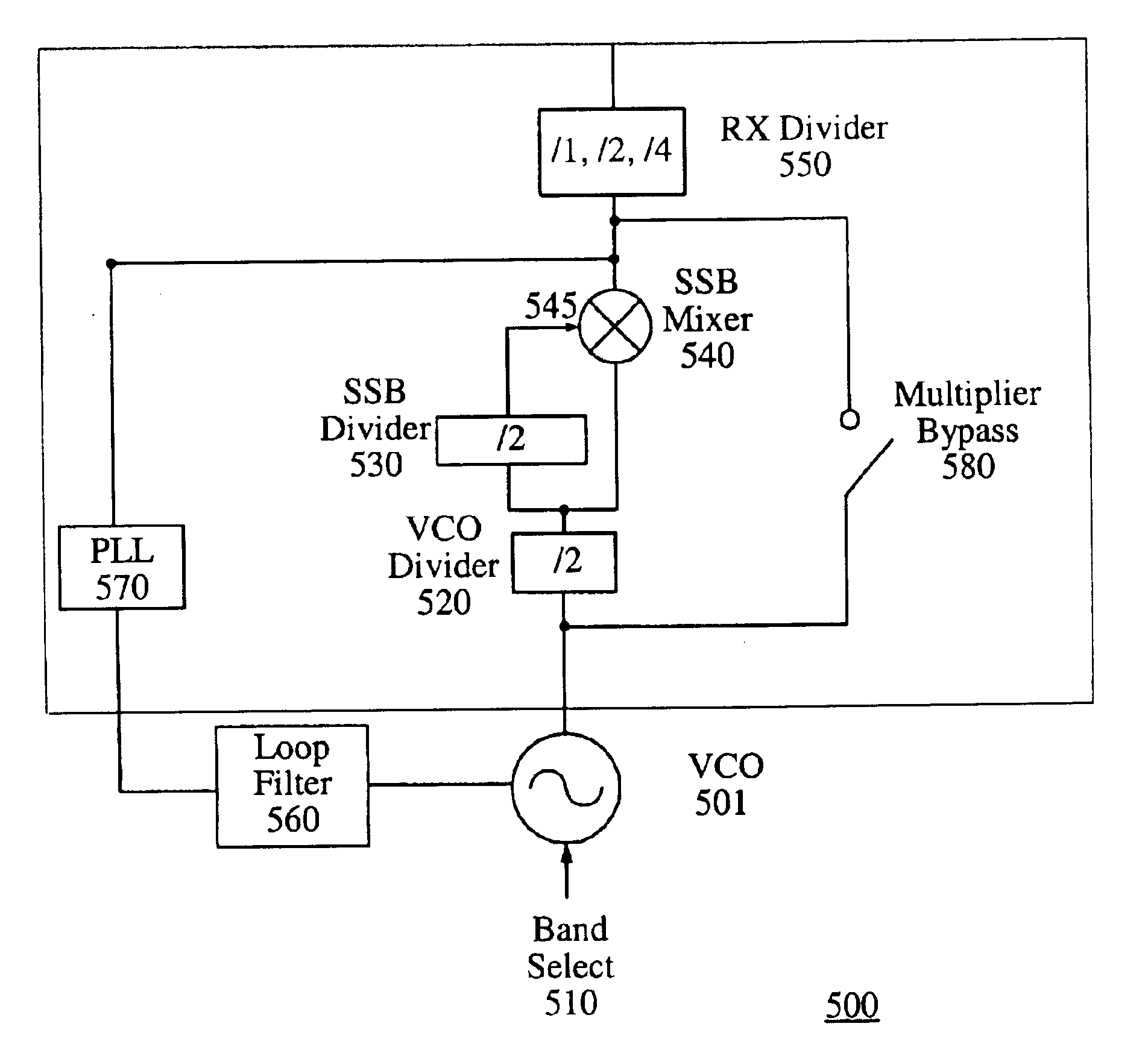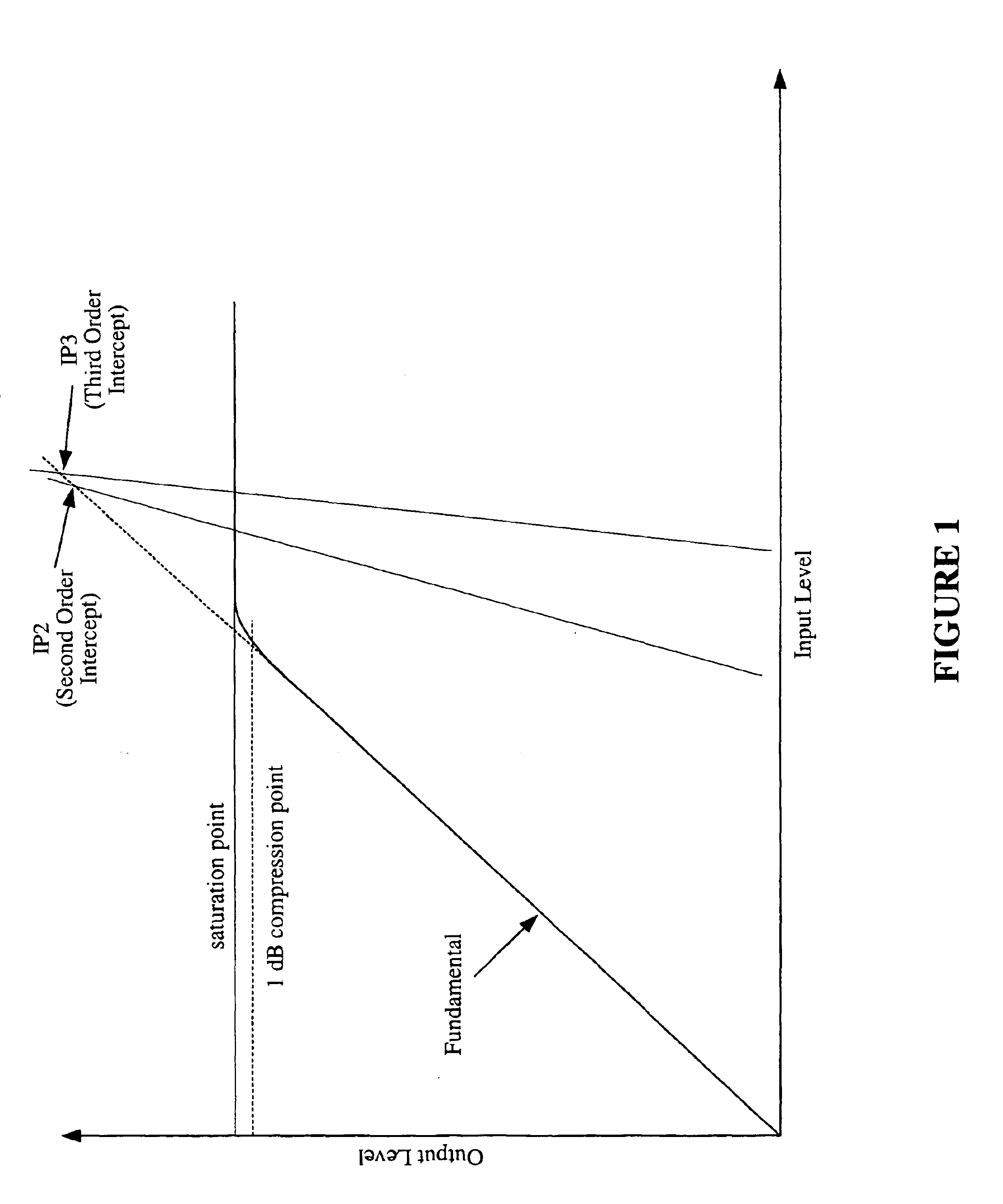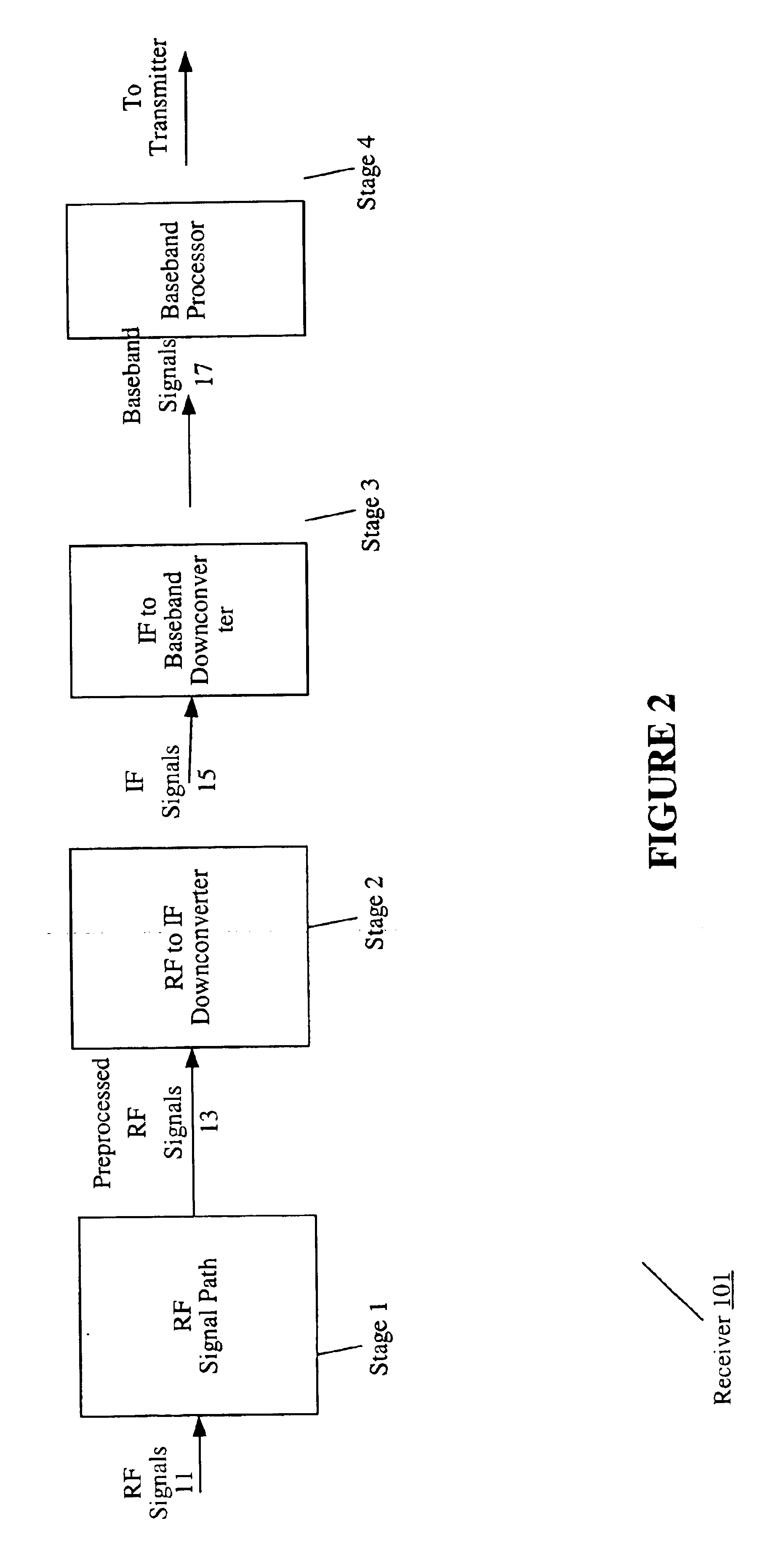Local oscillator leakage control in direct conversion processes
a local oscillator and leakage control technology, applied in the field of wireless communication, can solve problems such as intermodulation distortion, weak signal detection more difficult, and distortion of unwanted signals at the output of devices
- Summary
- Abstract
- Description
- Claims
- Application Information
AI Technical Summary
Benefits of technology
Problems solved by technology
Method used
Image
Examples
Embodiment Construction
[0050]FIG. 4 is a high-level block diagram of direct downconversion receiver 200 according to an embodiment of the present invention. Receiver 200 comprises an RF signal path 210, a direct downconverter 220, and a baseband processor 230.
[0051]RF signal path 210 receives RF signals 201. RF signals 201 may comprise signals modulated in multiple modes and conveyed in multiple frequency bands. RF signal path 210 may include selection mechanisms to select among various modes and various bands. Additionally, RF signal path 210 may include amplifiers or filters to prepare RF signals 201 for further processing. Such prepared signals are designated as preprocessed RF signals 215 in FIG. 4. Direct downconverter 220 receives preprocessed RF signals 215 from RF signal path 210 and downconverts such signals to baseband signals 225.
[0052]Baseband processor 230 may perform subsequent processing on baseband signals 225, such as, for example, DC cancellation, matched and jammer filtering, sample dec...
PUM
 Login to View More
Login to View More Abstract
Description
Claims
Application Information
 Login to View More
Login to View More - R&D
- Intellectual Property
- Life Sciences
- Materials
- Tech Scout
- Unparalleled Data Quality
- Higher Quality Content
- 60% Fewer Hallucinations
Browse by: Latest US Patents, China's latest patents, Technical Efficacy Thesaurus, Application Domain, Technology Topic, Popular Technical Reports.
© 2025 PatSnap. All rights reserved.Legal|Privacy policy|Modern Slavery Act Transparency Statement|Sitemap|About US| Contact US: help@patsnap.com



